EXTREMELY RARE! WWII 8th Air Force B-17 "Trolley Ride Missions" BRUSSELS Map - Complied by 4th Fighter Group
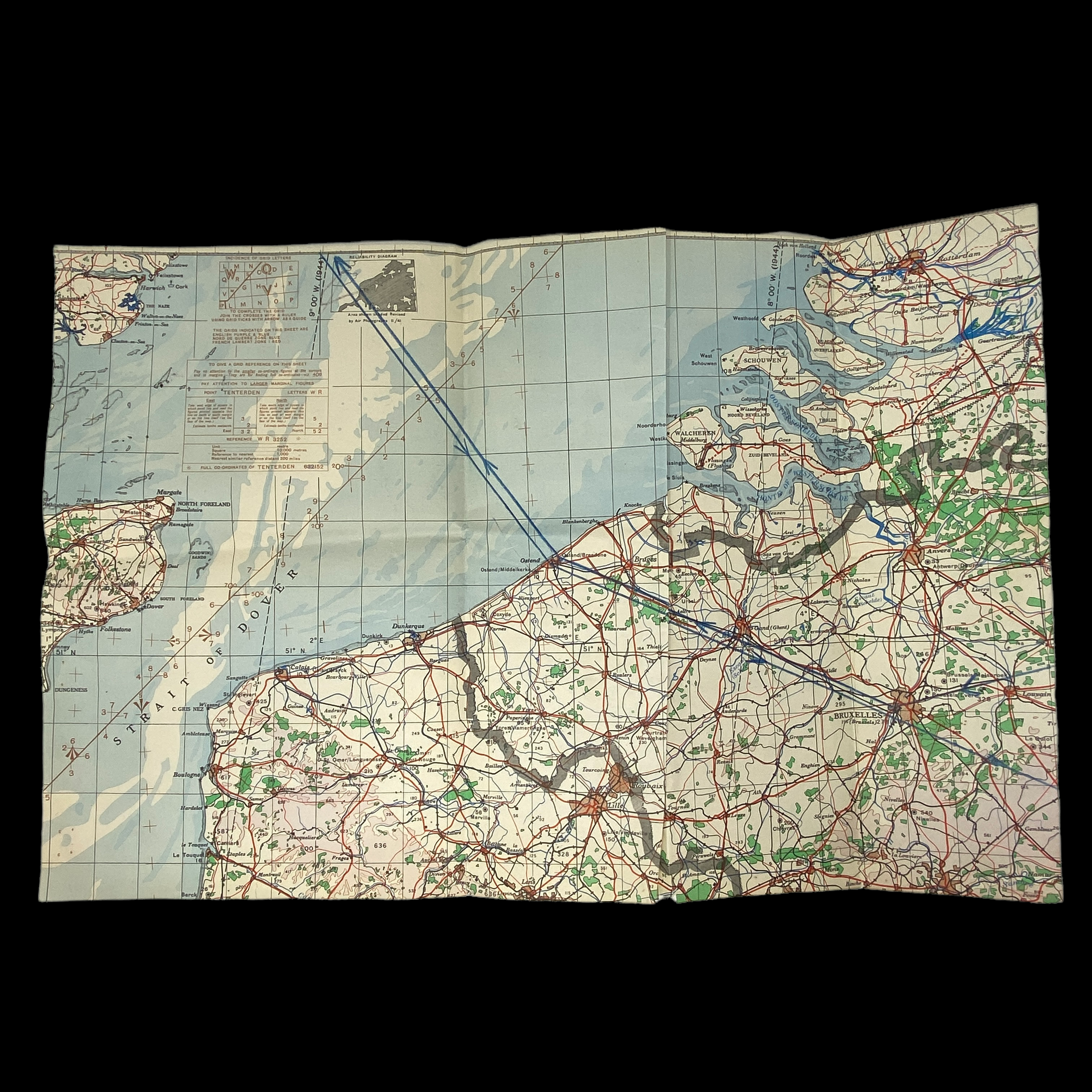
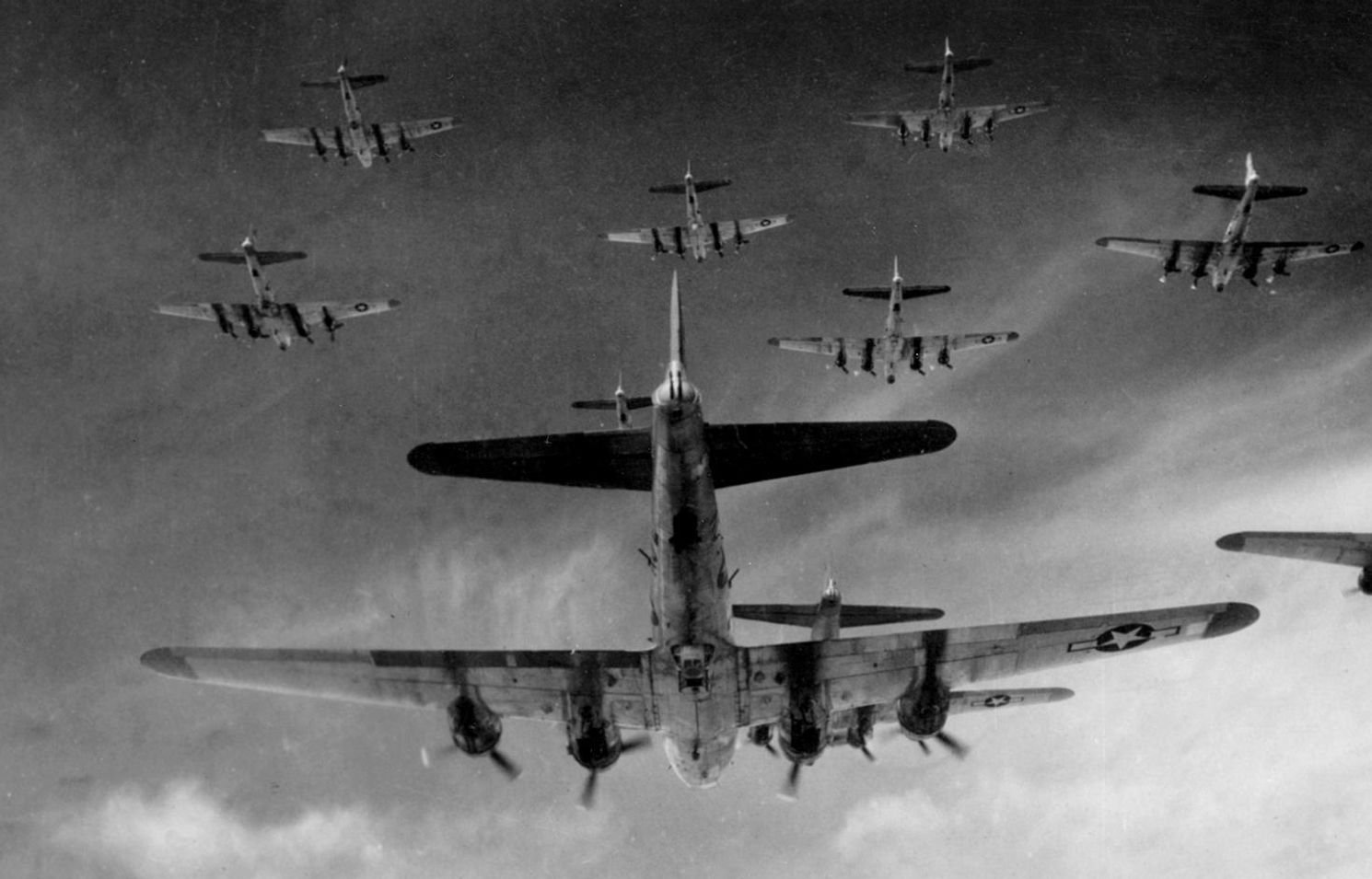

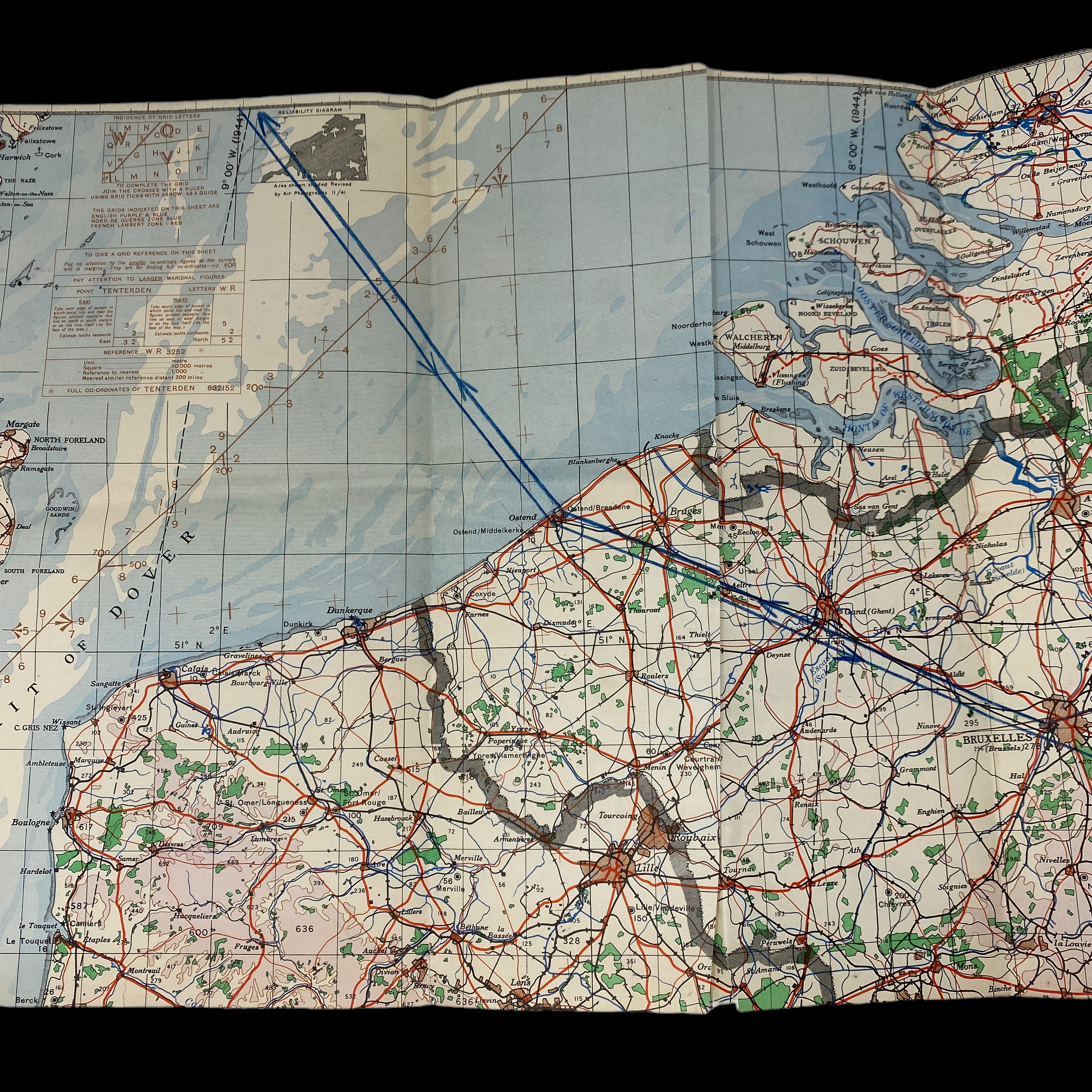
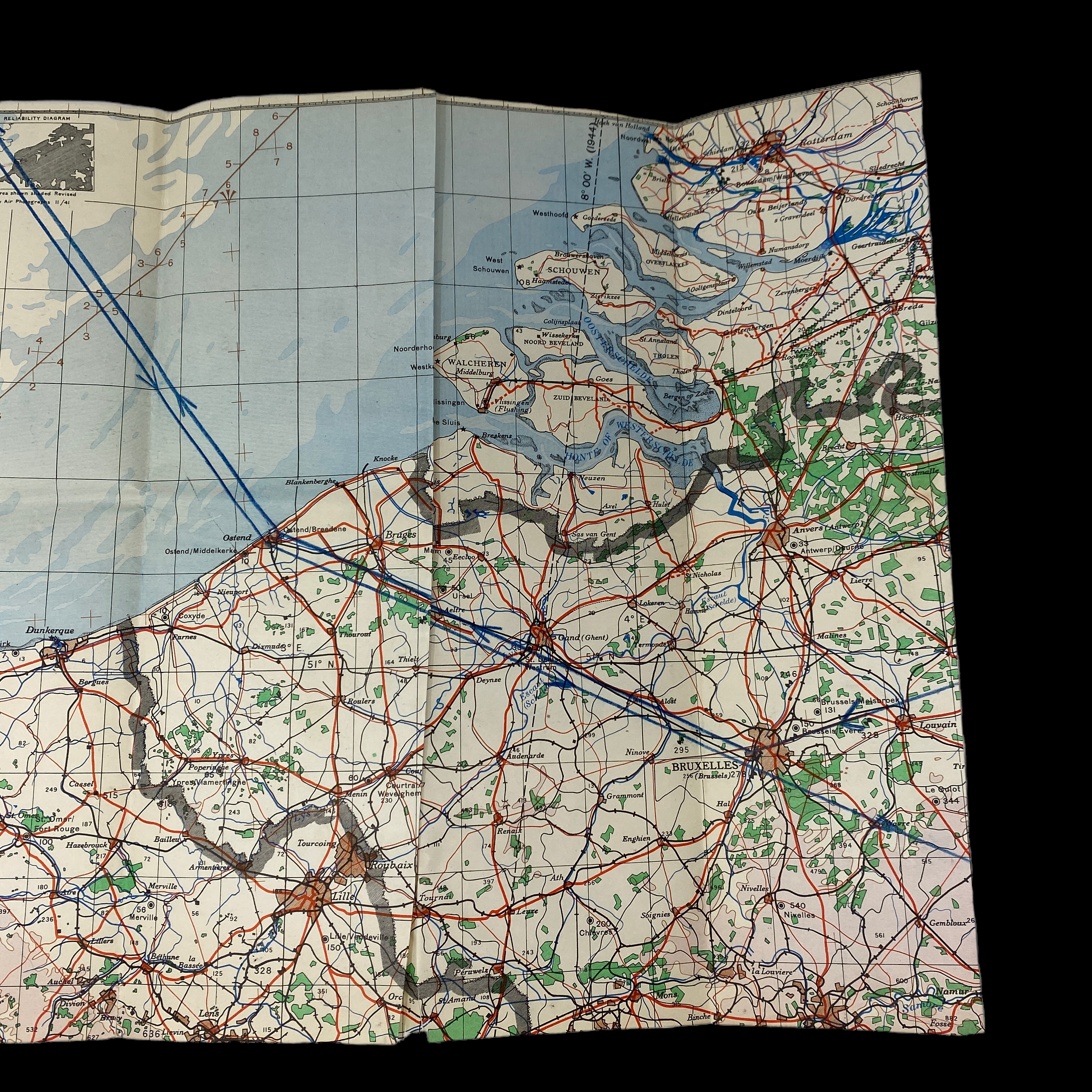
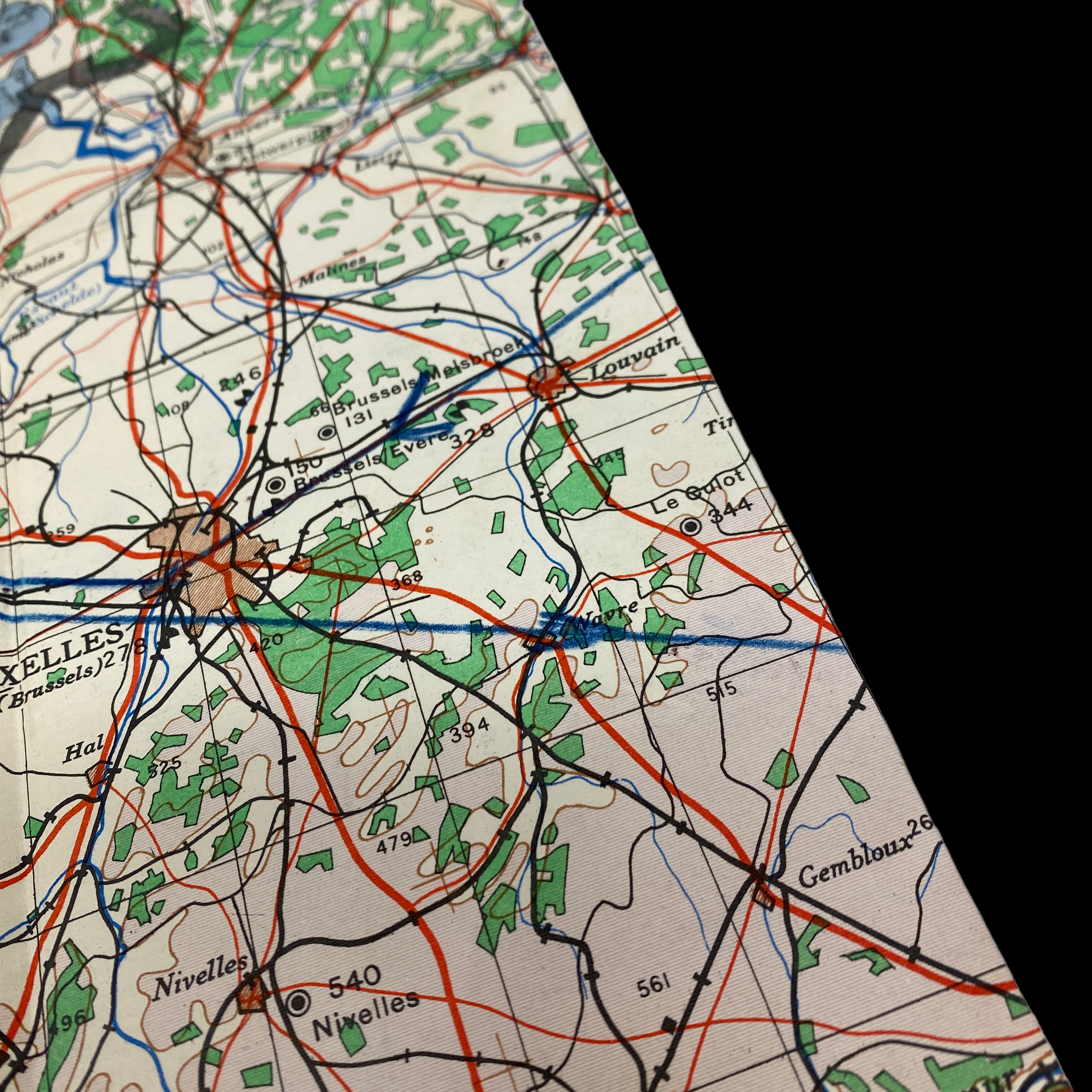


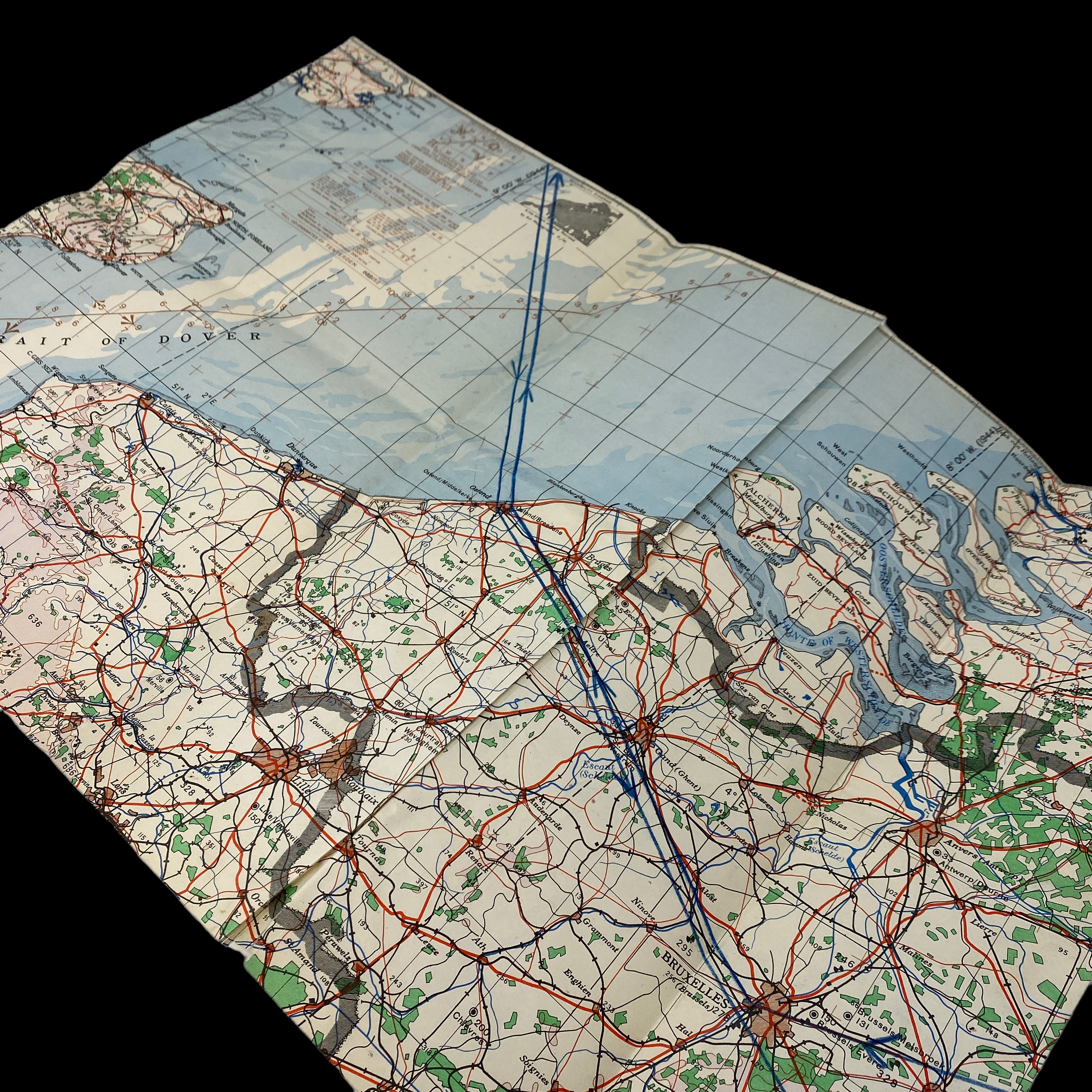
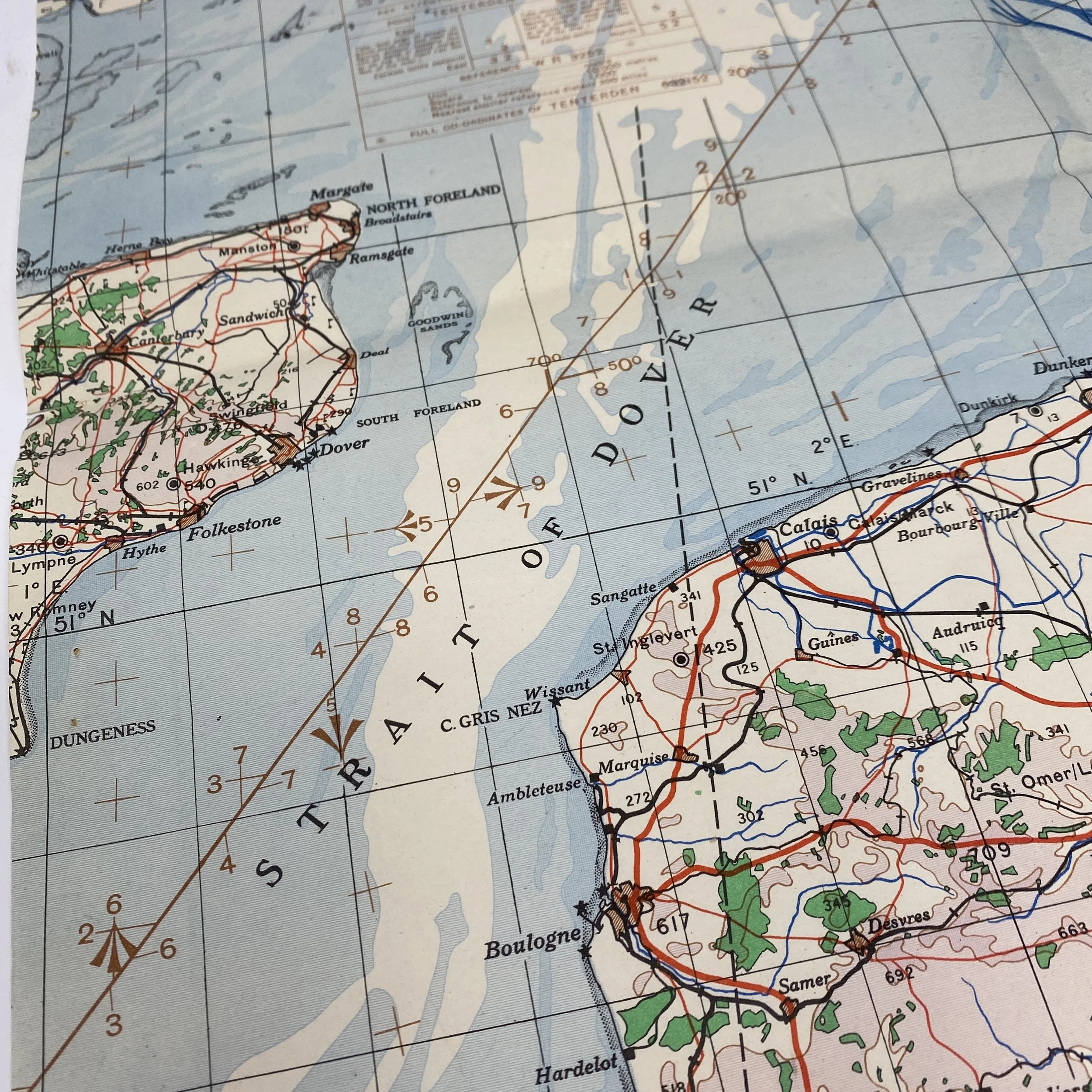



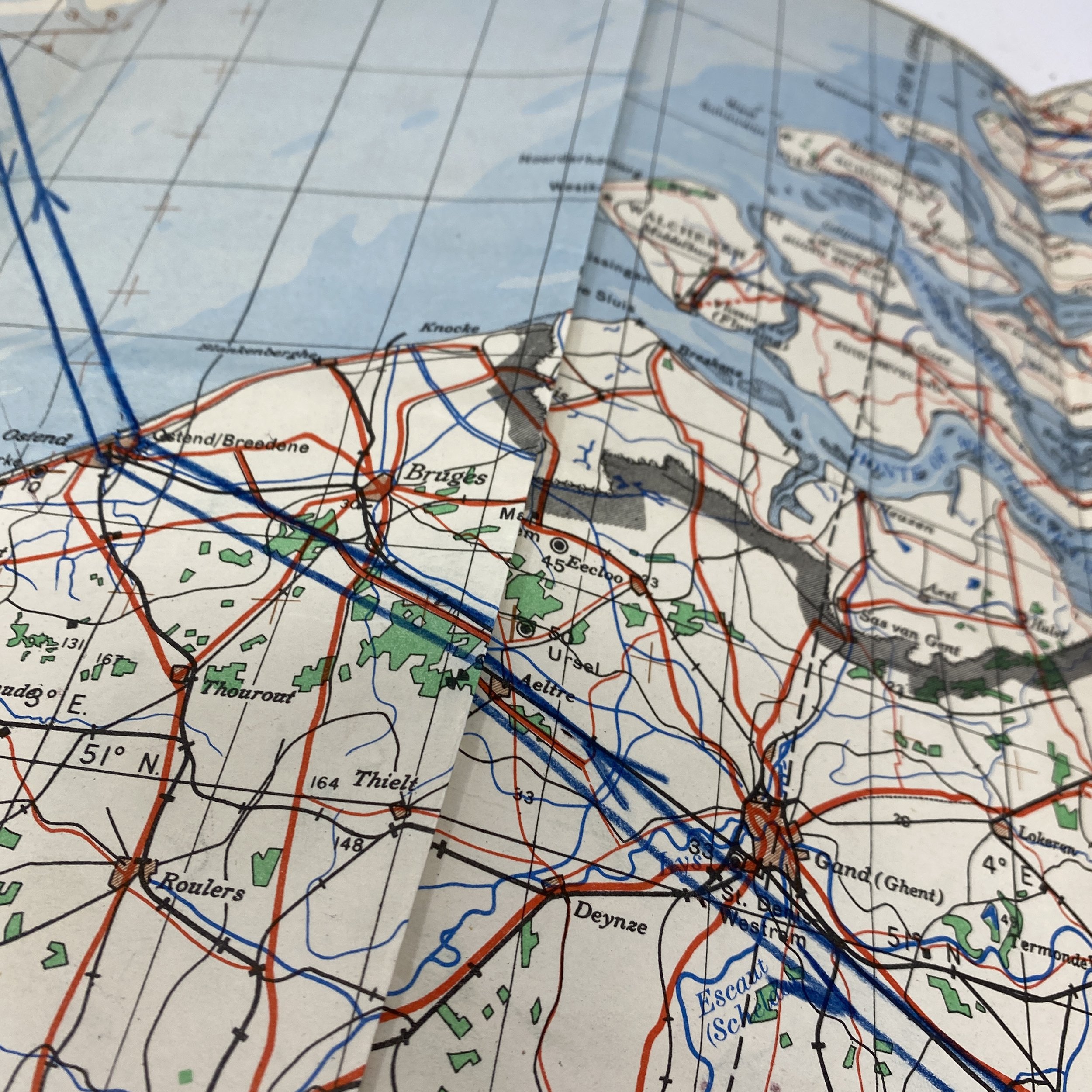




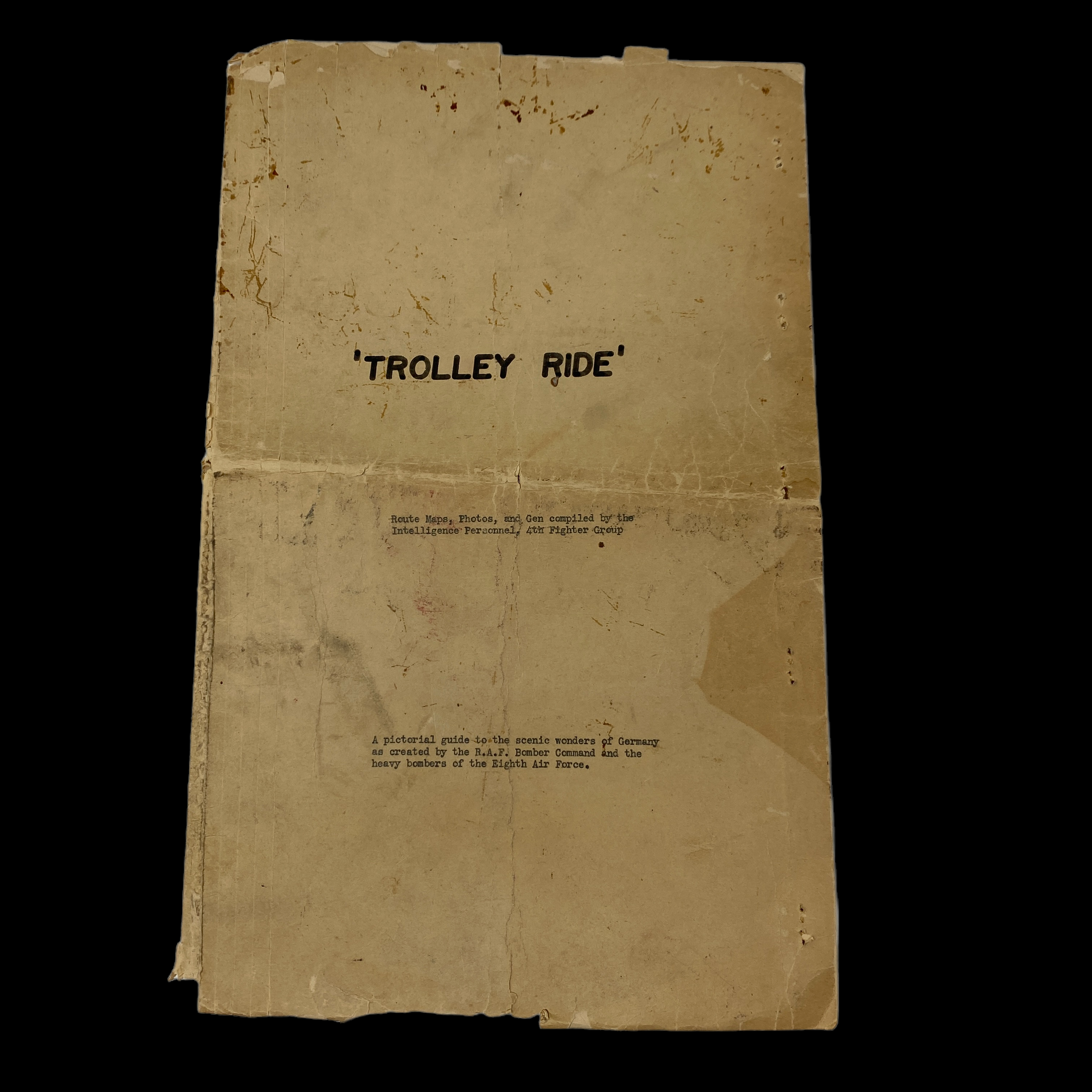

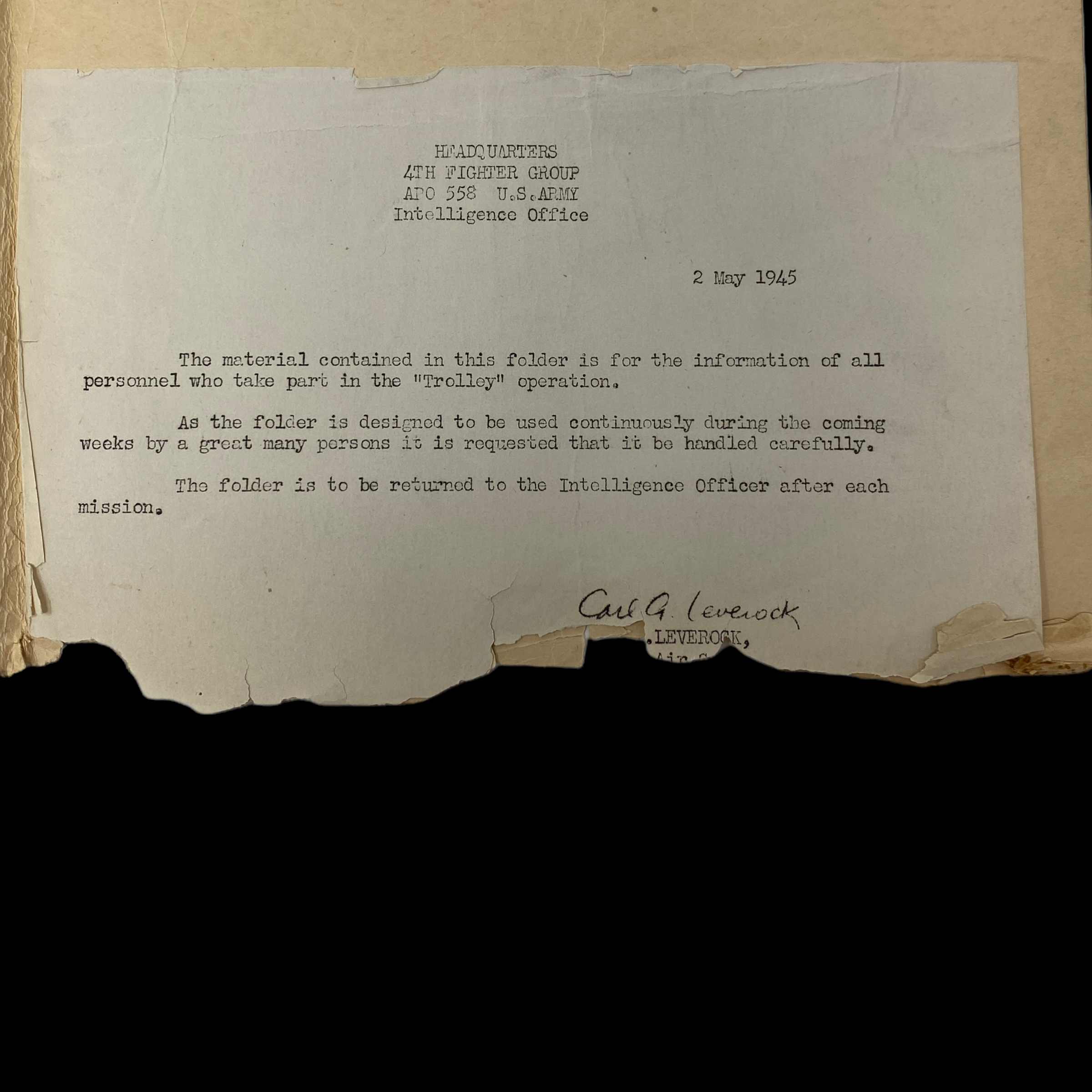
EXTREMELY RARE! WWII 8th Air Force B-17 "Trolley Ride Missions" BRUSSELS Map - Complied by 4th Fighter Group
Comes with C.O.A.
This extremely rare museum-grade artifact is an original mission map used on the infamous “Trolley Ride” B-17 missions of the U.S. Eighth Air Force during WWII. This heavily annotated mission map was compiled by the 8th Air Force’s 4th Fighter Group using the exact mission maps of the 8th Air Force B-17 bombers during one of their aerial raid missions over BRUSSELS.
In the original Trolley Ride mission folder (as pictured) these maps were found in it states “THE MATERIAL CONTAINED IN THIS FOLDER IS FOR THE INFORMATION OF ALL PERSONNEL WHO TAKE PART IN THE “TROLLEY” OPERATIONS. AS THE FOLDER IS DESIGNED TO BE USED CONTINUOUSLY DURING THE COMING WEEKS BY A GREAT MANY PERSONS IT IS REQUESTED THAT IS BE HANDLED CAREFULLY. THE FOLDER IS TO BE RETURNED TO THE INTELLIGENCE OFFICER AFTER EACH MISSION.”
This means that not only was this map used on one of the 8th Air Force Trolley missions, but, it was used on countless Trolley Ride missions in the 8th Air Force B-17 across the European Theater.
This map was put into a folder where it was taken onto the 8th Air Force’s B-17 to the ground personnel of the 8th Air Force with an opportunity of seeing the results of their contribution in the strategic air war against Germany. Only by flying over areas that had been bombed by the 8th Air Force or attacked by Allied land forces could the ground crews really understand what their dedication and skill had helped achieve. The Trolley flights were flown in early May 1945. By the time they ended, 450 airmen from the 392nd had flown over 2,000 of their own ground crew. They had also flown support personnel from the 3rd Strategic Air Depot at Watton, the 355th Fighter Group at Steeple Morden and the 491st BG. Many 392nd crews and several passengers made multiple trips.
The rules were generally the same for each mission. Group commanders were told to "accord special attention to the selection of the most responsible and experienced pilots." Most of the 392nd pilots chosen were indeed veterans of many combat missions. A few, however, had arrived at the 392nd too late for combat. These included 2/Lt William E. Bledsoe, 1/Lt Paul J. Fenoglio, F/O William H. Rutherford, and 1/Lt John T. McCarthy, whose first missions over the Continent were on these sightseeing trips.
Planes would have a minimum crew of 5 (pilot, copilot, navigator, engineer, and radio operator) with 10 passengers per a/c. Passengers would be issued chutes and Mae Wests; pilots would brief them on bail-out and ditching procedures and the interphone.
8th AF planners were greatly concerned about safety. Their teletypes stressed the "responsibility of the pilot to his crew and passengers " and "the deplorability of needless loss of life to carelessness, particularly now that hostilities in Europe are at an end."
Orders were given to maintain 1000 feet above terrain for the entire flight and that there would be no buzzing or circling. An observer plane with a command pilot no lower than field grade flew with each wing to ensure these procedures were followed. (At one 392nd BG briefing, this escort was called "the Gestapo a/c".)
In the event weather would not permit the prescribed altitude, the entire mission was to be cancelled. The code word for recall was a heartfelt "Sorry."
Despite these precautions, accidents did occur. On 7 May, a 389th BG crashed into the Engers Bridge over the Rhine near Cologne, killing 19 men. On 10 May, a B-17 was lost during an air collision over the UK with no known survivors.
In our years of working with artifacts and handling thousands other WWII air maps, this is the ONLY 8th Air Force “Trolley Ride” mission maps we have ever seen! This is truly a once-in-a-lifetime artifact and piece of WWII history.